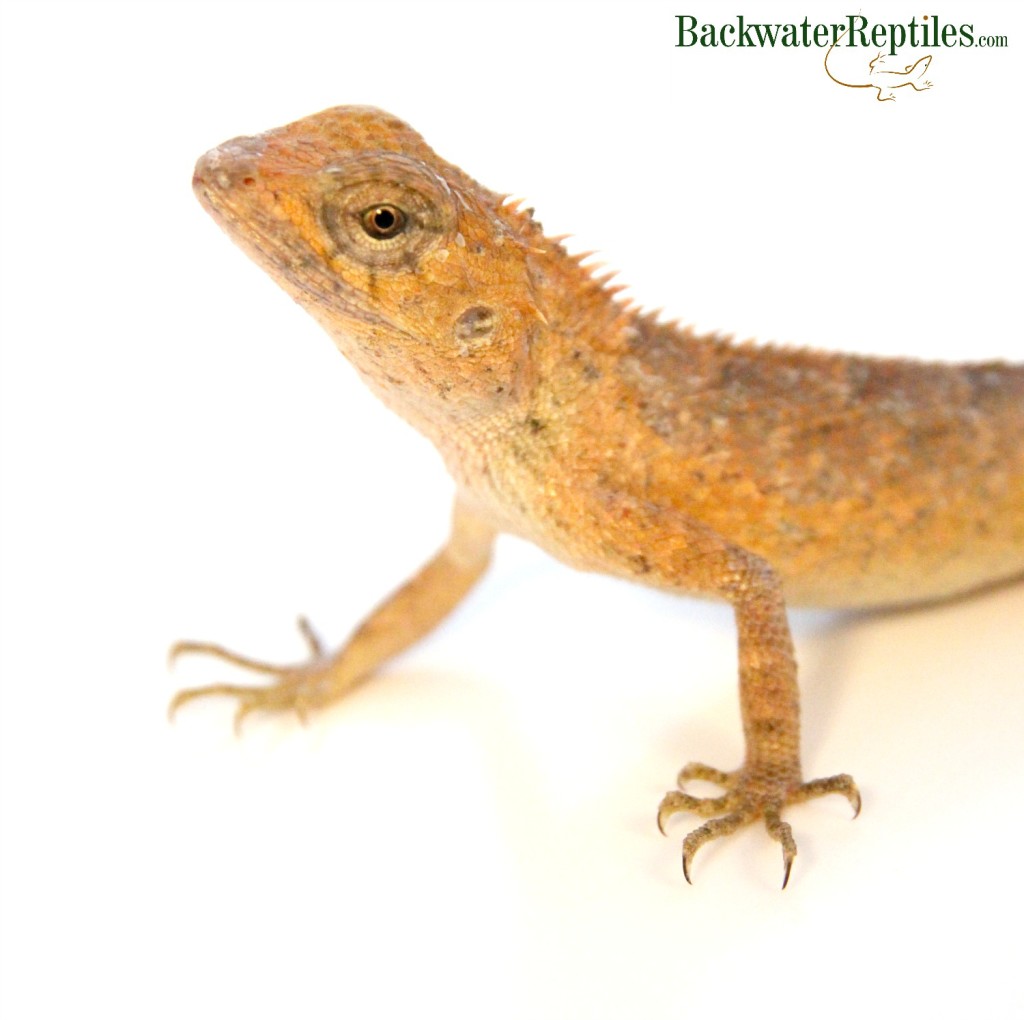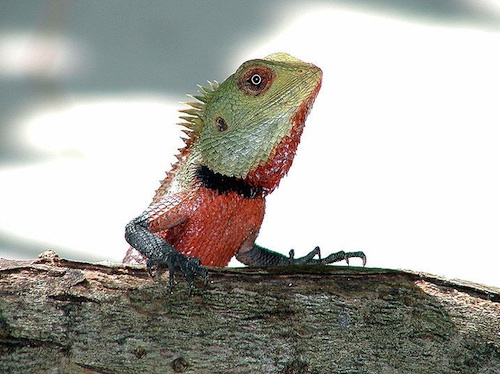If you’ve never heard of a calote lizard, you’re not alone. These lizards are known by a few other different monikers. The most common secondary name for the calote is Oriental Garden Lizard, but the lizards in the calote family are also known as tree dragons and even “bloodsuckers.” We’re kind of puzzled by that last one since calote lizards certainly aren’t vampiric at all.

Caring for Calote Lizards
As its common name suggests, the Oriental garden lizard has a wide range across Asia. It can be found in Southwest Asia to Sri Lanka as well as from South China into Sumatra. It is a hardy little lizard that acclimates to its habitat rapidly, meaning that it is definitely not an endangered or threatened species and can be found commonly in its home range.
Calotes are mid-size lizards with decent life spans in captivity. They range in size from sixteen to twenty inches long and can live for up to ten years. Males are larger than females and often have pronounced crests running along their backs. People are often attracted to calotes, particularly Calotes versicolor because of the bright colors these lizards display. The versicolor in particular can be red, purple, green, brown, blue and any combination of those colors mixed together.
Calotes are arboreal lizards and spend a lot of time in trees. This means that in captivity, your calote will need a cage or enclosure with plenty of room to explore and stretch its legs. We highly recommend a home with lots of foliage (either natural or artificial is fine) or other cage furniture to facilitate climbing.

Multiple calotes can be kept in the same enclosure provided you give them enough room. Just be sure that all the lizards are of similar size so that no cannibalism occurs unintentionally. Males will become territorial as they mature, so it’s also unwise to keep two males in the same enclosure, but multiple females shouldn’t be an issue.
Because they are diurnal lizards, calotes of all species will require UV lighting and a heat source. Make sure you are using a full spectrum bulb as UVA and UVB rays are required for calotes to synthesize vitamin D3. Ambient cage temperature on the hot side of the cage should be around eighty degrees or hotter because calotes are tropical lizards. Temperatures that are too cold will slow down their metabolisms and could even cause digestive issues.
Depending on the species of calote lizard, you should feed it a diet of invertebrates and vegetable matter. Calotes will eat mostly crickets as far as insects are concerned, but they are also known for accepting wax worms and meal worms from tongs or fingers. If your calote enjoys vegetables, feel free to give it leafy greens and fruit. However, be sure to remove any uneaten food at the end of each day to avoid spoilage and the potential for bacteria to aggregate in the food dish.
Calotes might not drink water from a dish, but it is important that a dish with clean water always be available. We recommend one that is large enough for the lizard to sit in and have a soak if it desires. As we previously mentioned, calotes are tropical lizards and require humidity to stay healthy, so a water dish is a great way to make sure this occurs.
In order to ensure your calote receives proper nutrition, we recommend dusting your feeder insects with calcium at each feeding. A multivitamin dusting can be done less frequently. We advise once per week.

As far as personality goes, calotes are not aggressive, but they can be flighty. Initially, when you take them out of their cage, they will be skittish, but as you handle them more and more, they will grow accustomed to you. It also doesn’t hurt to offer food when you take them out so that handling time becomes a pleasant experience for them.
If you think you’re ready for a tropical pet calote, Backwater Reptiles sells these colorful lizards. They’re fairly easy to care for and we do recommend them for people who are fairly new to keeping lizards.
